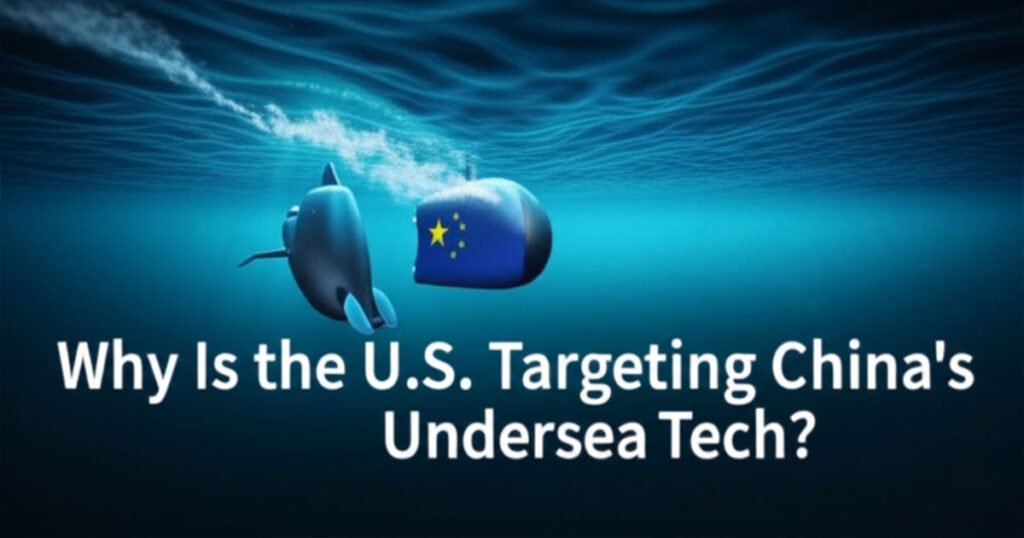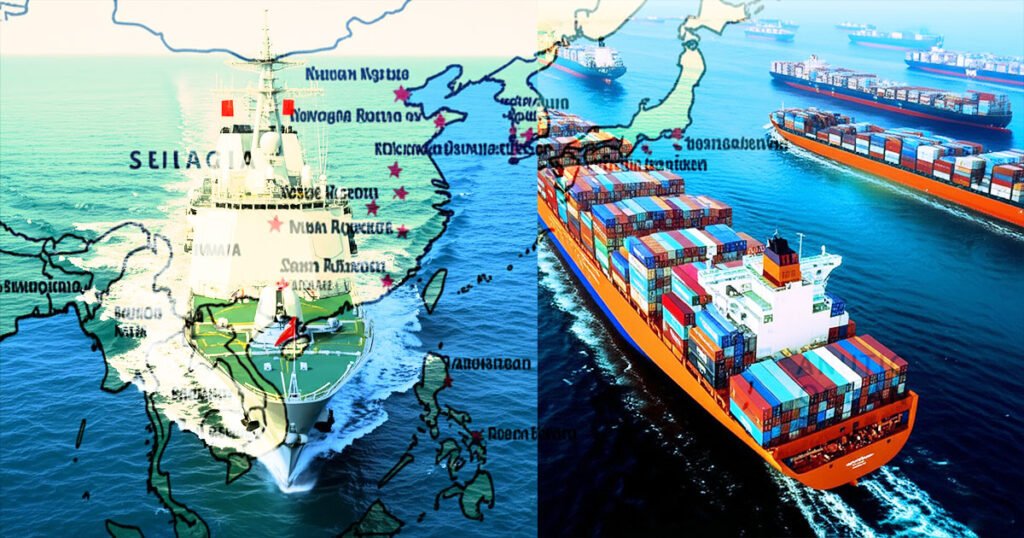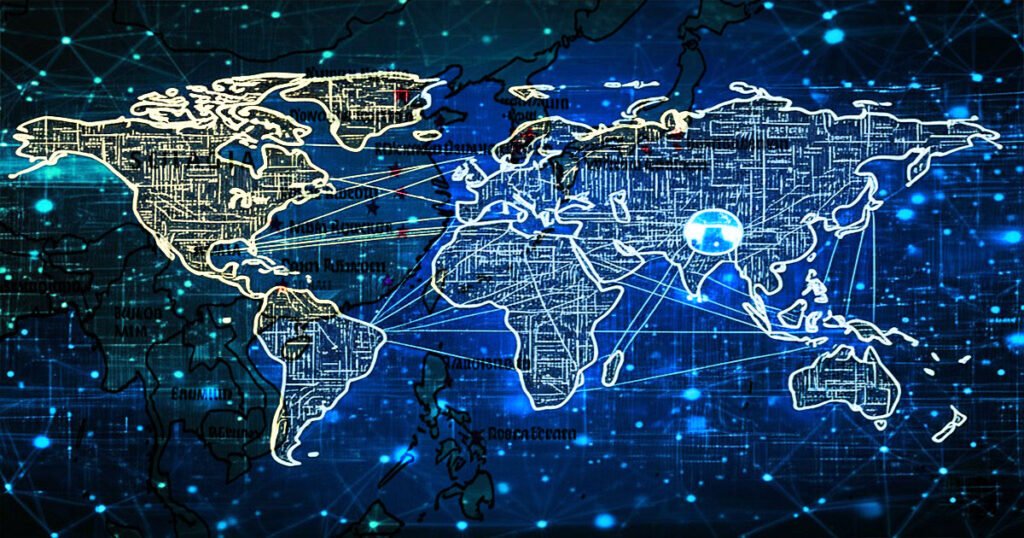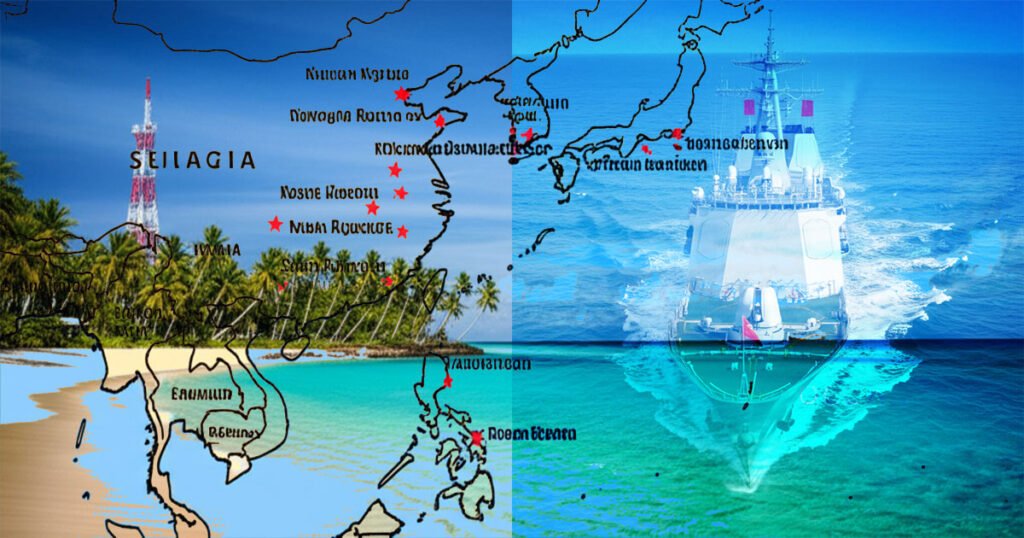The United States is embarking on another contest to bar China from spreading its influence in sea tech, alleging that there are serious national security hazards involved. The crackdown focuses on the Chinese-constructed submarine cables, unmanned underwater drones, and the maritime spying networks, which have been deemed as weak links in worldwide communications and military infrastructure. The action shows the tension between the United States, China, and a major shift in the tech cold war to convert into oceans around the world.
Why Is the U.S. Targeting China’s Undersea Tech?
The New Digital Battleground: Beneath the Sea
War battles and espionage are no longer confined to the air and space alone; the ocean floor has emerged as a hot and delicate location. More than 95 percent of international data, including internet communications, financial and diplomatic communication, is transmitted using undersea fiber-optic cables. These fibers are a critical part of the infrastructure upon which our communication world runs.

The point of concern to the U.S. defense officials is that China has grown fast in terms of investment in subsea technologies that are now suspect, or rather are said to have dual-use capability; that is, they can be utilized in both commercial and military purposes. Such technologies like drones under the sea, sensors, or the ship that lays down cables can be converted to espionage, computer hacking, or maritime supremacy.
This is a major concern of the U.S., particularly the risk of data sovereignty and confidentiality in the military. When the enemy gets access to such communication channels, then everything from the stock exchange to the battlefield strategy may be at stake.
What Technologies Are Under Scrutiny?
1. Submarine Fiber-Optic Cables
Submarine cables are the lifelines of global connectivity. Laid on the ocean floor, these cables connect continents and carry terabytes of data every second. But what if someone could tap into them?
That’s exactly the concern U.S. agencies have with Chinese-involved cable networks. While some cables are jointly built by multinational companies, China’s growing control through firms like HMN Tech (formerly Huawei Marine) raises fears of built-in backdoors or data rerouting techniques.
A compromised cable could allow:
- Real-time data interception
- Geo-location of sensitive signals
- Remote disruptions or shutdowns
- Tracking of military vessel communications
Due to the strategic importance these cables hold, they are no longer regarded as neutral infrastructure; they have become essential elements of a nation’s security.
2. Unmanned Underwater Vehicles (UUVs)
China is now able to collect sea maps, monitor surveillance submarines, and repair oceanic cables using robotic drone submarines. For years, China has invested billions into UUV technology that can function without human control for prolonged durations, oftentimes for months.
Some of the most advanced Chinese UUVs are suspected of being capable of:
- Tapping into underwater communication nodes
- Deploying surveillance sensors near U.S. naval bases
- Disrupting or sabotaging foreign cable systems
These concerns are amplified by reports of such vehicles being found near sensitive U.S. and allied underwater infrastructure, including in the South China Sea and Pacific territories.
3. Seafloor Surveillance Systems
Perhaps the most covert aspect of undersea technology is the deployment of deep-sea sensor arrays. These systems, some linked to China’s “Blue Ocean Information Network,” can detect underwater movement, capture acoustic signatures of submarines, and map strategic marine territory.
The U.S. believes these sensor arrays are not simply for scientific or commercial use but are intended to:
- Monitor the movement of foreign submarines
- Map military infrastructure
- Document sensitive acoustic signatures on which future warfare can be based
Despite the high significance of Guam and the Hawaiian Islands to the U.S. Indo-Pacific strategy, it would still give China an upper hand in strategy, at least in its naval deployment aspects.
🇨🇳 China’s Maritime Expansion: What’s Driving It?
This move of China into undersea tech is not by chance, but rather a long-term strategy in line with its Digital Silk Road project. This global infrastructure project aims to offer affordable digital solutions to developing countries developed by Chinese companies, including 5G networks, data centers, and cloud technologies.

Less well known is another part of this effort: the increase in Chinese control over the world’s submarine cables, most of which traverse Africa, South Asia, the Middle East, and the South Pacific.
Why does this matter?
- Data Sovereignty: Nations become dependent on China’s tech and data flow
- Infrastructure Control: China can potentially isolate or throttle traffic
- Global Leverage: In the event of conflict, digital access becomes a bargaining chip
What’s more, China is training state-affiliated firms and research institutions to lead in deep-ocean exploration, mineral mapping, and marine communication, making this a strategic national priority, not just a tech race.
U.S. Strategy: New Restrictions in Motion
To counter the perceived threat, the U.S. has already started adopting a range of policy and defence moves. These include:
- Export controls: Blocking U.S. companies from supplying critical parts to Chinese underwater tech firms.
- Licensing reviews: Licenses will henceforth be reviewed on any subsea projects that include territories or allies of the United States, in the event that they pose a risk to national security.
- Investment in Western ventures: The U.S is pressuring firms such as SubCom and Alcatel Submarine Networks to increase their operation.
- Military surveillance: Doubling of the research and development budget of DARPA and project funding into Navy underwater surveillance, such as sea-floor mapping and underwater cable surveillance.
The implication of this crackdown is already redefining the operations of companies. In 2024, Google and Facebook pulled out of a joint cable project with China’s HMN Tech, citing intelligence community warnings.
Geopolitical Implications: More Than Just Tech
This new front in the U.S.-China standoff doesn’t just affect the two superpowers; it has global implications.

Allies on Alert
U.S. allies have already begun taking action:
- Australia canceled a cable project linking it to Papua New Guinea due to Chinese firm involvement.
- Japan has started auditing all submarine cable projects for foreign tech risks.
- The European Union has called for a common framework to ensure subsea data integrity.
This has led to the creation of “trust networks,” a sort of digital NATO, where only trusted nations and vendors can participate in critical digital infrastructure.
Cold War 2.0 — But Digital
This isn’t just about technology. It’s about ideology. The U.S. and its allies promote an open, democratic internet, while China supports a state-controlled, censored digital model.
Undersea tech has become a key point of divergence. The ocean floor is now where digital governance is being contested. between a closed internet model and an open-data society.
Expect future showdowns over:
- Quantum undersea encryption
- Subsea AI listening devices
- Ownership of intercontinental digital highways
What’s at Stake for the World?
In case the tensions keep on heating, the world is likely going to a fractured internet environment, where:
- Nations no longer share the same web infrastructure
- Sensitive data is routed only through “safe” zones
- Tech firms are forced to choose sides
This affects:
- International banking, which depends on real-time subsea transfers
- Cloud services, which may be split into China-friendly and U.S.-friendly clouds
Crisis comes especially in times of war or a disaster
In short, as who has control over the oceans may change, the way the internet operates could.
Real-World Example: Pacific Islands as a Flashpoint
The Pacific Islands have become a key flashpoint in the undersea tech war. These small island nations are often the only accessible locations for laying cables across the Pacific, making them strategic assets.

China has offered several islands high-speed internet infrastructure and financial incentives through HMN Tech and other firms. In contrast, the U.S., Australia, and Japan have stepped in with counter-projects and grants to steer them away from Chinese partnerships.
In some cases, Pacific Island leaders have expressed concern over being caught in the middle of a digital tug-of-war. Their choices could shape who controls data flow across the Pacific for decades.
What Happens Next?
Experts believe this undersea technology race is only in its early stages. Here’s what we can expect going forward:
- Tighter international policies on who can build what, and where
- More scrutiny on international telecom deals, especially in emerging nations
- Innovation in cable defense, including automated monitoring systems and anti-tap technologies
Ultimately, this undersea standoff just represents a deeper truth: data is oil, and the structures that carry it, especially across the oceans, have now become a global security issue.
Final Takeaways
- The United States is undertaking a decision-based crackdown on the Chinese technological dominance beneath the oceans, in order to defend its online and armed forces sovereignty.
- Such recent technologies as underwater drones, sensors, and fiber cables are currently regarded as possible weapons.
- The step is an indication of an emerging geopolitical fault line in the competition for dominating crucial infrastructure.
- The international internet might become more fragmented and regionalized, which will be an issue for all, including governments and consumers.
- The ocean floor is no longer an ocean floor of water and rock; it is the place of cyber war and digital dominance in the future.
FAQs
What is the reasoning in the U.S. blocking China regarding undersea technology?
- The use of China in undersea cable systems and maritime surveillance equipment is a threat to national security, particularly in the interception of data and military surveillance.
Which underwater technologies have been included in the latest U.S. sanctions?
- Of particular concern are fiber optic submarine cables, unmanned underwater vehicles (UUVs), and seafloor sensors, which are believed to be multi-purpose; they can both perform desired impending purposes and also harmful prohibited ones.
What does that relate to the overall U.S.-China war on technology?
- The crackdown belongs to the bigger digital decoupling operation between the United States and China, the competition to control emerging tech infrastructure, including 5G, artificial intelligence, and now the less fashionable subsea systems.
Will this affect the internet worldwide?
- Yes. Breakdown in cable initiatives or ascent in geopolitical breaks may prompt a fragmented internet where nations exclusively confide in individual infrastructure suppliers, exacerbating the drawbacks of digital maltreatments and elevating their prices.
How are U.S allies responding?
- Such partners as Australia, Japan, and the UK are reviewing the use of their cable networks and passing security policies to restrict or prohibit the work of Chinese technology in their most vulnerable and important underwater communication lines.

